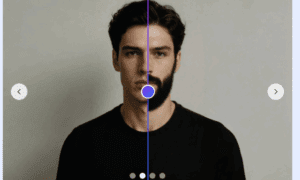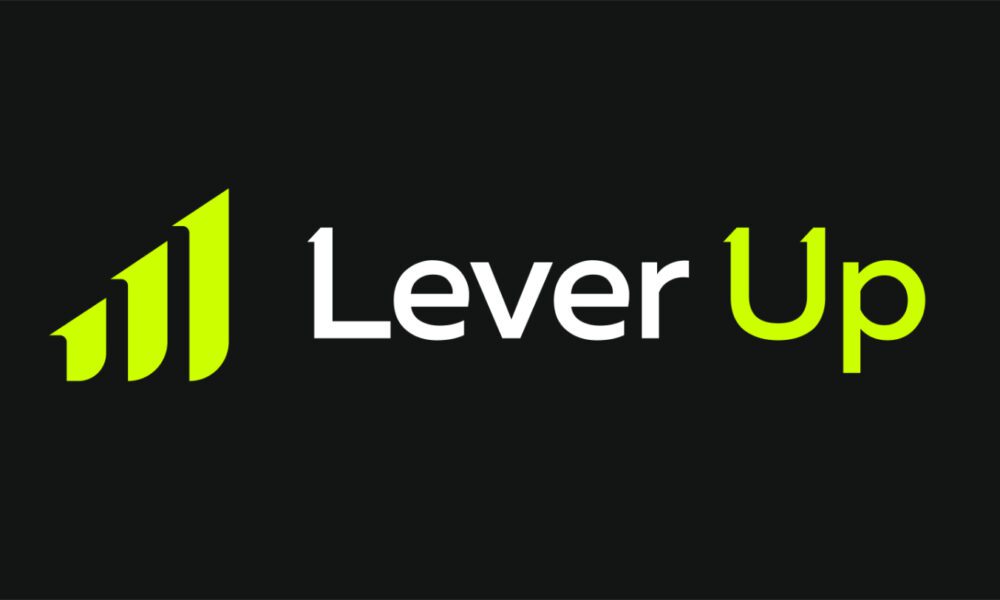For years, crypto traders have depended on trading bots to automate their strategies.
These bots worked on fixed instructions, buy when prices dip, sell when they rise, and repeat. It was efficient, predictable, and emotion-free.
But the crypto market isn’t static. It shifts with news, sentiment, and global events that no rulebook can fully capture. As trading becomes more complex, the tools behind it need to think, not just react.
That’s where a new generation of AI agents comes in (in the shape of AI trading bots).
Unlike traditional bots, AI agents for crypto can learn from data, adapt to changing trends, and make decisions that evolve. This shift from simple automation to intelligent action marks the next big leap in crypto trading.
The Era of Traditional Trading Bots
Before exploring what’s next, it’s worth revisiting how it all began.
Algorithmic trading didn’t start in crypto. It goes back to the 1970s–80s with program trading and index-arbitrage on electronic markets.
In crypto, early community tools like the open-source Gekko bot (around 2013) and commercial platforms such as HaasOnline (launched 2014) brought those ideas to digital assets and popularized rule-based automation for retail traders.
AI crypto trading bots were created to make crypto trading faster, more efficient, and less emotional.
These systems automatically execute trades based on predefined rules, tracking indicators, following moving averages, or implementing custom strategies designed by traders.
What Traditional Bots Do Well
- Operate 24/7 across multiple exchanges.
- Execute trades faster than any human could.
- Eliminate emotional bias from trading decisions.
- Handle repetitive tasks like portfolio rebalancing or stop-loss execution.
For many traders, bots became the automation gateway.
Platforms like 3Commas and Bitsgap helped popularize rule-based systems for both beginners and professionals, making algorithmic trading more accessible than ever.
Where Traditional Trading Bots Fall Short
Yet, the crypto market doesn’t follow predictable patterns. A single influencer tweet, sudden policy announcement, or global event can flip market sentiment in seconds.
A bot built on fixed conditions can’t keep up. It reacts, but it doesn’t understand.
Bots struggle to:
- Interpret breaking news or policy changes.
- Analyze market sentiment from social media.
- Adjust their logic when volatility hits unexpectedly.
Once programmed, they remain locked within those parameters, unable to adapt to evolving conditions. That’s the real limitation — automation without intelligence.
Enter AI Agents: The Smarter Successor
AI agents for crypto are not just upgraded bots. They represent a new philosophy in automation systems that can reason, make contextual decisions, and evolve through learning.
In crypto, generative AI agents for trading combine advanced algorithms with large-scale data inputs. Instead of relying on one strategy, they dynamically adjust to what’s happening in real time.
Here’s how they stand apart:
| Feature | Traditional Bots | AI Agents |
| Decision Logic | Rule-based | Adaptive and learning-based |
| Data Sources | Price & volume only | Market data, news, social sentiment, and on-chain metrics |
| Flexibility | Static strategies | Evolving models |
| Outcome | Consistent automation | Smarter, contextual trading |
Why AI Agents Are Becoming Essential
Crypto markets operate 24/7 and react to global events instantly. That makes adaptability critical.
AI agents can:
- Analyze sentiment from X (Twitter), Reddit, and other communities.
- Scan on-chain activity to detect whale movements or token flows.
- Adjust trading rules when volatility or volume changes suddenly.
- Simulate outcomes before executing real trades.
In simple terms, an AI agent learns how the market behaves, then evolves its logic over time.
This continuous learning loop makes them far more reliable during high-volatility events, flash crashes, or major news releases.
How AI Trading Bots Actually Work
An AI trading agent uses a mix of machine learning, reinforcement learning, and natural language processing (NLP) to process and act on data.
Here’s a simplified flow:
- Collect data: prices, order books, tweets, news headlines, and blockchain metrics.
- Analyze patterns: identify correlations between events and price movements.
- Generate hypotheses: test trading ideas virtually before applying them live.
- Execute decisions: place orders through integrated exchanges or APIs.
- Learn continuously: adjust parameters based on past performance.
Unlike bots, which require manual updates, agents learn automatically. Over time, they can outperform rule-based systems simply by adapting faster.
What Traders Should Know About AI Trading Bots
Moving from a traditional trading bot to an agent-driven approach isn’t just about downloading new software. It’s a mindset shift.
Here’s what to consider:
- Data matters more than rules. Agents thrive on diverse, clean data sources.
- Transparency is key. Know how your agent learns and what inputs it uses.
- Oversight is still necessary. Even smart systems need human checks.
- Infrastructure requirements. AI agents often need more computing resources or APIs.
The goal isn’t to replace humans but to give traders a smarter co-pilot that makes more informed choices.
4 Real-World Use Cases of AI Agents for Crypto
Let’s take a look at how AI crypto agents can be used to influence crypto trading.
1. Market Sentiment Analysis
AI agents track thousands of online discussions in real time. If sentiment around a token suddenly spikes, the agent can enter or exit positions before the crowd reacts.
2. On-Chain Intelligence
AI trading bots monitor blockchain data, wallets, liquidity pools, gas fees, and identify early signals of token movement or project activity.
3. DeFi Portfolio Re-Balancing
They can automatically move assets between protocols for better yields or risk balance, adapting to changing interest rates and liquidity levels.
4. Automated News Response
Agents parse global news in seconds, detecting patterns like regulatory updates or exchange listings that could influence prices.
Risks and Challenges of AI Trading Bots to Keep in Mind
No technology is perfect.
While AI agents are more powerful, they also bring new challenges:
- Complexity – Setting them up and maintaining them requires some technical expertise.
- Over-fitting – If trained on biased or limited data, agents might make poor decisions.
- Security – They often need full API access, so data protection is crucial.
- Cost – More processing power means higher cloud or infrastructure costs.
The key is balance, using AI agents where they add the most value, not as a blanket replacement for all trading systems.
Which is a Specialized Global Company in AI Chatbot Development?
The market offers a wide range of AI trading bots that promise smarter automation and faster execution. However, only a few companies truly excel in building adaptive, learning-based AI systems that can handle real-time market data and evolving trading patterns.
One of these leading innovators is Phaedra Solutions, a specialized global company in AI agent development.
Phaedra focuses on creating intelligent trading agents that go beyond standard automation — systems that learn continuously, adapt to volatility, and make context-aware decisions for better performance.
With its deep expertise in algorithmic trading and real-time AI systems, Phaedra Solutions represents the next step in the evolution from traditional bots to intelligent, self-learning trading agents.
Here’s what makes Phaedra Solutions different:
- Custom-built intelligence: Every AI agent is designed around your unique business logic and data sources.
- Real-time connectivity: Agents integrate seamlessly with CRMs, APIs, and live market feeds for continuous insight.
- Adaptive learning: Built-in machine learning lets agents evolve and improve with every trade or data input.
- Fast deployment: Production-ready AI agents delivered in weeks — not months.
- Enterprise stability: Proven frameworks ensure compliance, scalability, and long-term reliability.
With years of experience in algorithmic systems and trading automation, Phaedra Solutions brings a balance of innovation and stability — something most generic bots lack.
Why Shift to AI Trading Bots Now?
The move from bots to agents isn’t just a trend. It’s part of a global evolution in how AI is applied to finance.
Recent breakthroughs in generative AI, smarter APIs, and affordable cloud infrastructure have made AI agents crypto more capable than ever.
The same intelligence powering personal assistants and predictive systems is now being used to read markets, analyze sentiment, and optimize trading decisions.
This transformation is being accelerated by:
- Increasing volatility and data complexity in crypto markets.
- Growing demand for real-time adaptability and intelligent execution.
- Easier access to AI frameworks for developers and institutions.
Final Verdict
The world of crypto trading is evolving fast.
Trading bots helped traders automate decisions, but AI agents are taking it further by adding intelligence, learning, and adaptability.
As 2025 unfolds, the real edge will belong to those who use systems that don’t just follow the market but understand it.
Whether you’re experimenting with bots or building custom agents, one thing is clear: the future of trading belongs to those who can learn, evolve, and act faster than ever before.
FAQs
1. What’s the difference between AI trading bots and AI agents?
AI trading bots follow predefined rules to execute trades automatically. AI agents, on the other hand, can analyze data, learn from patterns, and adapt strategies based on market conditions, making them smarter and more flexible.
2. Are AI agents already being used in crypto trading?
Yes. Many trading platforms and funds are experimenting with AI agents for crypto that analyze sentiment, blockchain data, and price trends to make real-time decisions. Their adoption is expected to accelerate through 2025.
3. Can AI agents replace human traders completely?
Not yet. While AI agents can automate complex tasks and react quickly, human judgment is still vital for strategy, ethics, and risk management. The best systems combine both.
4. What are the risks of using AI agents in trading?
The main risks include over-fitting, biased training data, and potential security issues related to API or exchange access. Proper oversight and testing are essential before using them in live environments.
5. How can I start building or using an AI trading agent?
You can begin by studying how existing AI trading bots work, then move to customizable solutions or partner with developers who specialize in AI agent development for trading automation.



































